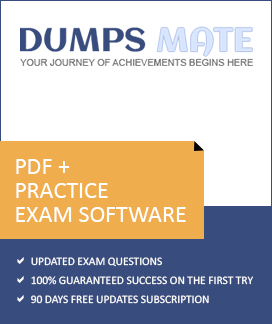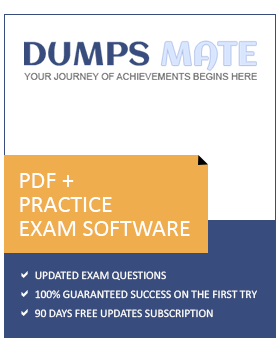In Workday, after configuring an Integration System User (ISU) and an Integration System Security Group (ISSG) with the appropriate security policies and assigning them to an Enterprise Interface Builder (EIB) integration, there is a critical step required before the EIB can be launched successfully. This step ensures that all security configurations and permissions assigned to the ISSG take effect in the Workday tenant. Let’s analyze the question and evaluate each option systematically to determine the correct task, ensuring the answer aligns with Workday’s documented processes and the Workday Pro Integrations Study Guide.
Context of the Scenario
You’ve completed the following:
Created an ISU and configured it (e.g., with "Do Not Allow UI Sessions" checked for web service-only access).
Defined the necessary security policies (e.g., domain security policies with "Get" and/or "Put" access) for the ISSG to support the EIB’s operations.
The question now is what must be done before launching the EIB to ensure it functions as intended. In Workday, changes to security policies—such as adding permissions to an ISSG—do not take effect immediately. They remain in a "pending" state until activated, which is a key aspect of Workday’s security administration process.
Evaluation of Options
Option A: Activate Pending Security Policy ChangesIn Workday, whenever you modify security policies (e.g., granting domain permissions like "Integration Build" or "Custom Report Creation" to an ISSG), these changes are staged as "pending." To apply them to the tenant and make them active, you must run the "Activate Pending Security Policy Changes" task. This task reviews all pending security updates, allows you to add a comment for audit purposes, and, upon confirmation, activates the changes. Without this step, the ISSG will not have the effective permissions required for the EIB to access data or execute its operations, potentially causing the launch to fail due to insufficient authorization. This aligns directly with the scenario, as security policies have been configured and assigned, but not yet activated.
Option B: View Security for Securable ItemThe "View Security for Securable Item" report is a diagnostic tool in Workday that allows you to inspect the security configuration for a specific object (e.g., a web service operation, report, or task). It shows which security groups have access and what permissions (e.g., "Get," "Put," "View," "Modify") are granted. While this is useful for verifying that the ISSG has the correct policies assigned, it is a passive report—it does not modify or activate anything. Running this task would not enable the EIB to launch, as it doesn’t affect the pending security changes. Thus, it’s not the required step before launching the EIB.
Option C: Assign the ISSG to only one security policyThis option suggests limiting the ISSG to a single security policy, but this is neither a standard Workday requirement nor a task that exists as a standalone action. ISSGs can and often do have multiple security policies assigned (e.g., permissions for various domains like "Integration Build," "Custom Report Access," etc.), depending on the integration’s needs. Moreover, the question states that the ISSG has already been configured with the "correct security policies" and assigned to the EIB, implying this step is complete. Restricting the ISSG to one policy after the fact would require editing permissions again, triggering more pending changes, and still necessitate activation—making this option illogical and incorrect.
Option D: Maintain Integration Security PoliciesThere is no specific task in Workday called "Maintain Integration Security Policies." This option seems to be a misnomer or a conflation of other tasks, such as "Maintain Domain Permissions for Security Group" (used to assign permissions to an ISSG) or broader security maintenance activities. However, the question indicates that the security policies are already correctly configured and assigned. If this option intended to imply further configuration, it would still result in pending changes requiring activation via Option A. As a standalone action, it does not represent a valid or necessary task to enable the EIB launch.
Why Option A is Correct
The "Activate Pending Security Policy Changes" task is a mandatory step in Workday’s security workflow after modifying security policies, such as those assigned to an ISSG for an EIB. Workday’s security model uses a pending changes queue to ensure that updates are reviewed and deliberately applied, maintaining control and auditability. Without activating these changes:
The ISSG will lack the effective permissions needed for the EIB to access required domains or perform its operations (e.g., retrieving data from a custom report or delivering a file).
Running this task ensures that the security configuration is live, allowing the ISU (via the ISSG) to authenticate and execute the EIB successfully. This is a standard practice in Workday integration setup, as emphasized in the Workday Pro Integrations curriculum.
Practical Steps to Perform Option A
Review the list of pending changes (e.g., new permissions added to the ISSG).
Enter a comment (e.g., "Activating security for EIB launch – ISSG permissions").
Once completed, the security policies are live, and the EIB can be launched.
Verification with Workday Documentation
The Workday Pro Integrations Study Guide and related training materials confirm that activating pending security policy changes is a prerequisite after configuring security for integrations. This step ensures that all permissions are in effect, enabling the ISU and ISSG to support the EIB’s functionality. Community resources and implementation guides also consistently highlight this task as the final step before launching integrations that rely on updated security settings.
Workday Pro Integrations Study Guide References
Section: Integration Security Configuration – Explains the process of assigning security policies to ISSGs and the need to activate changes to operationalize them.
Section: Enterprise Interface Builder (EIB) – Notes that security updates for EIBs must be activated before launching to ensure proper access.
Section: Security Administration – Details the "Activate Pending Security Policy Changes" task as the mechanism to apply pending security modifications across the tenant.











